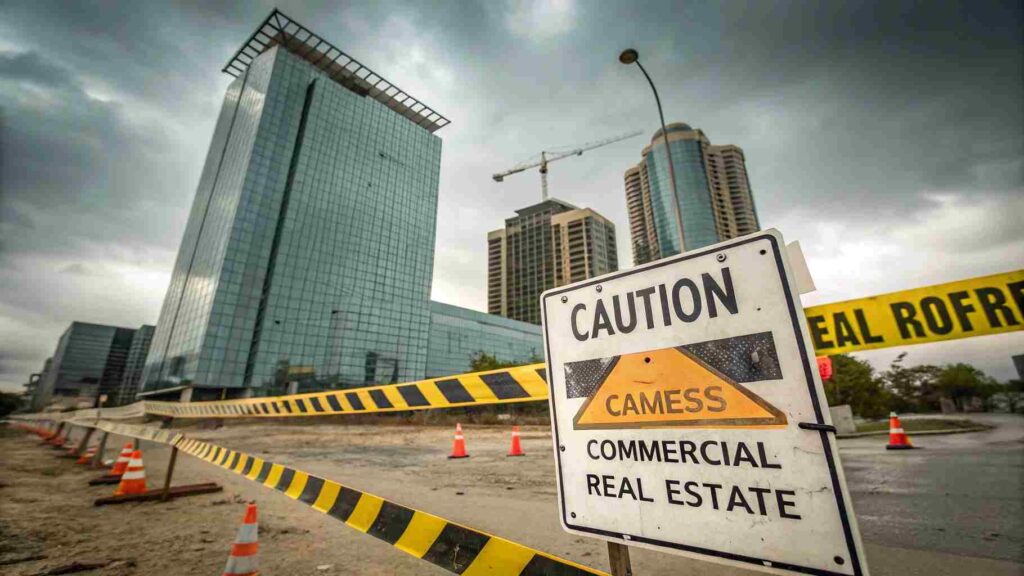Commercial real estate includes properties used for business, like offices, shops, and warehouses. It is a great way to invest and earn income through renting or selling properties.
Stay tuned with us! We will talk about What Is Commercial Real Estate—its types, benefits, and how it works. Whether you’re new to real estate or looking to invest, we have useful information for you. Keep reading to learn more!
What Is Commercial Real Estate?
Commercial real estate refers to properties used for business purposes rather than residential living. These properties generate income for owners through leases and rentals. Unlike residential real estate, which primarily serves as living spaces, commercial properties include office buildings, retail centers, industrial facilities, and more.
CRE includes properties that serve specific business needs, from large shopping malls to small office spaces and even special-purpose venues like hotels and hospitals. The commercial real estate sector is influenced by economic trends, government policies, and technological advancements, making it a dynamic and ever-evolving industry.
Types of Commercial Real Estate:
Office Spaces:
- Skyscrapers, business parks, and co-working spaces
- Classified as Class A (premium), Class B (mid-tier), and Class C (budget-friendly)
- Office spaces are a major segment of the CRE market, with demand influenced by remote work trends and business expansion.
Retail Properties:
- Shopping malls, strip malls, standalone stores, and restaurants
- High-traffic areas attract tenants seeking customer engagement
- The rise of e-commerce has impacted the demand for retail spaces, leading to more adaptive and experiential retail strategies.
Industrial Properties:
- Warehouses, manufacturing plants, and distribution centers
- Essential for supply chains and logistics
- The boom in online shopping has driven demand for fulfillment centers and last-mile delivery hubs.
Multifamily Housing:
- Apartment complexes, condominiums, and townhouses
- Considered commercial if they have five or more units
- Multifamily properties provide a steady income stream, with population growth and urbanization fueling demand.
Hospitality Properties:
- Hotels, motels, and resorts
- Generate income through short-term stays and tourism
- The travel and tourism industry heavily influences this sector, with factors like economic stability and global events playing a role.
Special-Purpose Properties:
- Hospitals, schools, theaters, and stadiums
- Designed for specific business functions
- These properties often require special licensing and zoning approvals, making them unique in the CRE landscape.
Benefits of Investing in Commercial Real Estate:
- Steady Income Stream: Commercial properties often yield higher rental returns than residential properties.
- Long-Term Leases: Businesses typically sign multi-year leases, ensuring financial stability.
- Appreciation Potential: CRE values tend to increase over time, leading to capital gains.
- Diversification: Investing in CRE reduces risk compared to relying solely on stocks or bonds.
- Tax Advantages: Investors can benefit from deductions on depreciation, mortgage interest, and other expenses.
- Portfolio Growth: Adding commercial properties to an investment portfolio can provide financial security and higher returns.
- Leverage Opportunities: Investors can use financing options such as loans and real estate investment trusts (REITs) to scale their investments.
Risks Associated With Commercial Real Estate:

- High Initial Investment: Requires substantial capital for purchase and maintenance.
- Market Fluctuations: Economic downturns impact property demand and rental income.
- Management Challenges: CRE demands active management, including tenant relations and maintenance.
- Regulatory Compliance: Zoning laws, environmental regulations, and tax policies affect property operations.
- Liquidity Constraints: Unlike stocks, selling commercial properties can take months or years.
- Tenant Dependence: A property’s success depends on maintaining quality tenants and securing long-term lease agreements.
How to Invest in Commercial Real Estate?
Direct Investment:
- Purchase property and lease it to tenants
- Requires property management expertise
- Ideal for hands-on investors willing to manage operations
Real Estate Investment Trusts (REITs):
- Allows investors to buy shares in a diversified property portfolio
- Provides passive income without direct ownership
- Traded like stocks, offering liquidity and accessibility
Crowdfunding Platforms:
- Pools funds from multiple investors to purchase commercial properties
- Lower entry barriers compared to direct investment
- A great option for those who want to invest smaller amounts in CRE
Partnerships & Syndications:
- Join forces with experienced investors or firms to invest in larger projects
- Reduces individual financial burden
- Ideal for investors looking for exposure without full ownership responsibilities
Future Trends in Commercial Real Estate:
- Technological Integration: AI and data analytics improve property management and investment decisions.
- Sustainability & Green Buildings: Increasing demand for eco-friendly commercial spaces.
- E-Commerce Growth: Expanding industrial real estate needs for warehousing and distribution.
- Flexible Workspaces: Rising popularity of remote work influences office space demand.
- Smart Buildings: Automation, IoT, and AI-driven property management systems enhance efficiency.
- Urban Development: Mixed-use properties combining retail, office, and residential spaces are gaining traction.
- Cryptocurrency & Blockchain: Innovations in digital transactions and smart contracts impact property investments.
FAQ’s
1. What does CRE mean in business?
CRE stands for Commercial Real Estate, which refers to properties used for business purposes rather than residential living. These properties generate income through leasing to tenants.
2. What is the difference between commercial and residential real estate?
- Commercial real estate (CRE) includes properties used for business, such as offices, malls, and warehouses.
- Residential real estate consists of properties used for housing, such as single-family homes and apartments.
- CRE generally has longer lease terms and higher income potential but requires more capital and management.
3. What is meant by commercial property?
A commercial property is any real estate used for business activities. Examples include office buildings, shopping centers, industrial warehouses, and hotels. These properties are primarily leased out to businesses rather than individuals.
4. What are the types of commercial real estate?
The main types of commercial real estate include:
- Office Spaces: Skyscrapers, corporate offices, coworking spaces
- Retail Properties: Malls, strip centers, standalone shops
- Industrial Properties: Warehouses, factories, logistics hubs
- Multifamily Housing: Apartment complexes with five or more units
- Hospitality Properties: Hotels, motels, and resorts
- Special-Purpose Properties: Schools, hospitals, stadiums
5. What is an example of commercial real estate?
A shopping mall is a common example of commercial real estate. It houses multiple businesses that rent retail space to sell products and services. Other examples include office buildings, hotels, and warehouses.
6. What type of commercial property is most profitable?
The most profitable commercial properties often include:
- Multifamily apartments: High demand ensures steady rental income.
- Industrial real estate: Warehouses and distribution centers benefit from e-commerce growth.
- Self-storage facilities: Low maintenance costs and high occupancy rates.
- Medical office buildings: Healthcare demand remains stable.
7. What is industrial real estate?
Industrial real estate includes properties used for manufacturing, production, storage, and distribution. Examples include warehouses, factories, and logistics centers. These properties support supply chain operations and are essential for industries like e-commerce and manufacturing.
8. What is residential real estate?
Residential real estate consists of properties used for living purposes, including single-family homes, apartments, townhouses, and condos. These properties are typically owned or rented by individuals and families.
Conclusion:
Commercial real estate is a powerful investment opportunity that offers high returns, long-term stability, and diverse options. Whether you’re a beginner or an experienced investor, understanding CRE can help you make smart decisions. With the right strategy, you can grow your wealth and succeed in this dynamic industry.








